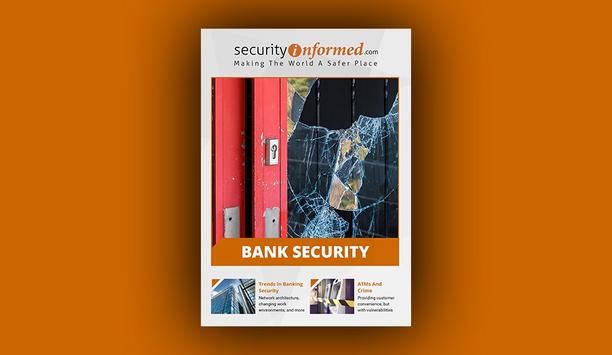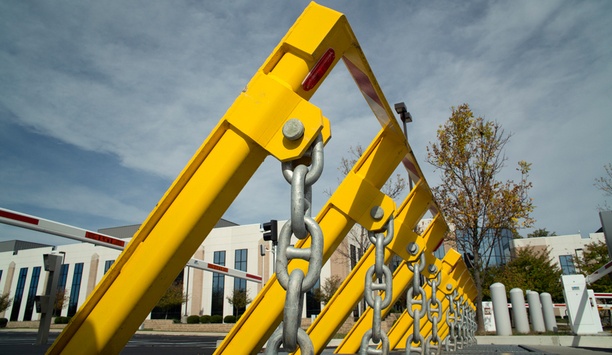A gunshot localization solution can turn a video camera system into a real-time safety system in the event of an active shooter. Called ShotPoint, the system is completely automated. Working with a video management system (VMS), it can enable a video image of an active shooter to be provided in seconds based on the location of a gunshot. “For responders, the police department doesn’t have to manage cameras, but has the instant availability of a camera feed,” says Kathleen Griggs, President of Databuoy, which supplies ShotPoint. “All the cameras are available and cued only in an emergency.”
ShotPoint is a network of sensors which can be mounted on walls, ceilings, street light poles or other indoor or outdoor locations. Using a “sensor mesh approach,” ShotPoint reliably detects and localizes the source of gunfire; ranging from small handguns to high caliber rifles. The system can cover large indoor or outdoor areas such as schools, office buildings, retail centers, campuses, and parks.
Localizing Gunshots Through Acoustic Channels
Each sensor has an array of four acoustic channels (microphones) that can locate the source of a gunshot sound, the time of arrival and the time distance of arrival. ‘Hearing’ shots from several vantage points (using multiple sensors) enables the system to take into account the angle and time of the sound, which vary in different environments, thus accurately providing the location of the gunshot.
A ‘fusion processor’ box (at the edge) listens to the various sensor nodes and computes the location of the gunshot, relative to a floorplan and/or based on global positioning system (GPS) location. In an outdoor location, additional information may also be inferred, such as the trajectory of the gunshot and/or the caliber of the firearm.
An event might cue an integrated |
Real-time Computer Analytics
Unlike other gunshot detection systems, ShotPoint does not require human confirmation of the gunshot, and the alarm is provided instantaneously (in real time and automatically) based on computer analytics operating at the edge. Keeping analytics simple and focusing on one type of event (gunshot) allows computations to be done quickly. “It may not be a real-time system if it takes time to classify many types of sounds,” says Griggs.
If a gunshot is detected, the ShotPoint system pushes a ‘shot report’ (including location and a time stamp) to a database in the cloud that sends the result instantly to any ‘subscriber,’ which could be a video system, a lock system, or an emergency notification app that provides a pre-configured message.
For example, an event might cue an integrated video management system to provide a picture of the shooter immediately to police and first responders, thus providing vital situational awareness when time is critical. “The more severe the active shooter event, and the longer it takes to clear the victims, the more victims there are likely to be,” says Griggs. “Time equals lives and the sooner they can solve the problem, the more lives can be saved.” ShotPoint can also be used to cue an automatic lockdown system that controls wireless locks.
ShotPoint Applications
Databuoy, which began as a contractor funded by the Defense Advanced Research Projects Agency (DARPA) and the U.S. Department of Defense (DoD), developed the acoustic sensor technology for military applications, but then realized that it is more useful in static locations than in the on-the-move environment of the military. Looking to commercialize the technology, the company turned to applications in stationary sites such as office buildings or schools.
A test installation of ShotPoint at Sandcreek Middle School in Ammon, Idaho, was recognized and awarded $75,000 by the U.S. Department of Justice. The system combines ShotPoint hardware with the school's existing camera systems to provide a live video feed to first responders in real time, thus enabling a fast, effective and coordinated response.
ShotPoint reliably detects and localizes the source of gunfire; ranging from small handguns to rifles |
A technology such as ShotPoint is also a tool to enable police instant access to an independent video system (such as one at a school or business) only in case of an emergency. If police has constant access to video from a private system, that video is subject to provisions of the Freedom of Information Act (FOIA), which in effect provides public access to the video. Sharing video only in emergency situations is not subject to FOIA requirements.
Smart City Security
In addition to applications in schools and other institutions, ShotPoint is a useful option for security and public safety in a smart city environment; the sensors could be attached to street lighting in various neighborhoods. If there is a gunshot, the system would record it. “Gun activity in some areas is not currently being reported,” says Griggs. “If you integrate it with cameras, you have evidence right there to solve the case and catch the criminals.” She acknowledges the scenario is currently theoretical.
ShotPoint has received Safety Act Designation Protections by the U.S. Department of Homeland Security. The DHS assumes liability for a terrorist event at a location that uses specified anti-terrorism systems; in effect, the DHS has vetted the system and provides an incentive for its use (in the form of lower insurance costs).
Griggs says the push notification system has a ReSTful API and is easy to integrate and install, incorporating network protocols.











































